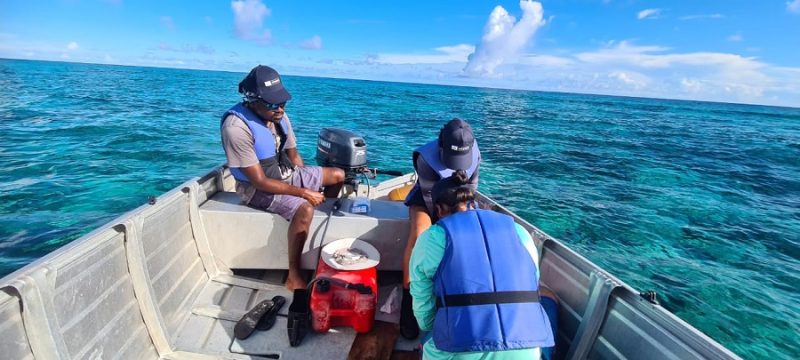UNESCO’s groundbreaking environmental DNA programme has mapped nearly 4,500 marine species across 21 World Heritage sites around the world, providing new key data and a revolutionary method for stronger ocean protection in an era of rapid climate disruption.

“This UNESCO programme revolutionises the way we observe and monitor marine life. At a time when the degradation of biodiversity is reaching an alarming pace, it provides new opportunities to better understand and protect critical ecosystems in the 18,000 protected marine areas around the world. In accordance with its Recommendation on Open Science, UNESCO makes this technology freely accessible and calls on its Member States to support the scientific community for its large-scale use,” declared Audrey Azoulay, UNESCO Director-General.
Climate disruption, including ocean warming, is forcing marine species away from their natural habitats and creating an urgent need to better understand and monitor their distribution. UNESCO has developed a new standardised eDNA sampling method to map ocean life.
Over the course of three years, marine experts and local scientists took 500 samples from 21 sites protected by UNESCO under the World Heritage Convention, detecting the presence of nearly 4,500 marine species – an impressive result that would previously have taken many years of survey work and cost millions of dollars.
Nearly half of the identified species were fish, and also include 86 shark and ray species, 28 mammal species, and three turtle species. Among the findings were 120 species listed as vulnerable, endangered, or critically endangered on the IUCN Red List.
The study also determined that many of these species will soon be confronted with temperatures exceeding their known tolerance limits. Based on the warmest future climate scenario, up to 100% of fish species in the tropical and subtropical sites studied would exceed their current thermal limits and be potentially endangered, while 10-50% of fish species in temperate oceans would exceed their current thermal limits.
A blueprint for marine biodiversity monitoring
UNESCO’s eDNA programme marks the first standardised application of eDNA sampling to monitor the status of marine species among global biodiversity hotspots. With a single 1.5-liter water sample, eDNA techniques can reveal genetic traces of approximately 100 marine species on average. Compared to other existing technologies, it is incredibly affordable, non-invasive and fast – reducing data-collection times from years to just months.
The method is also said to be easy to implement, allowing local communities to participate in advancing knowledge alongside scientists. More than 250 schoolchildren, some as young as six years old, participated in sampling expeditions led by UNESCO. The results demonstrate the power of this method as a transformative tool for ocean conservation.
All data from the eDNA initiative is systematically uploaded to UNESCO’s Ocean Biodiversity Information System (OBIS), a global open-access platform that ensures the information is freely available, comparable, and interoperable for researchers and decision-makers worldwide.
An essential tool to achieve climate and biodiversity targets
UNESCO’s initiative is a vital step toward achieving the Kunming-Montreal Global Biodiversity Framework’s “30×30” goal of protecting 30% of the world’s terrestrial, inland water, and coastal and marine areas by 2030.
By combining cutting-edge science with citizen participation, UNESCO’s technology provides a scalable and accessible model that can be applied to the more than 18,000 existing marine protected areas – and new ones that will be created – to address the urgent challenges facing the ocean today.
The data collected will support science-based decision-making, helping Member States better plan and manage marine protected areas to adapt to changing climates.
